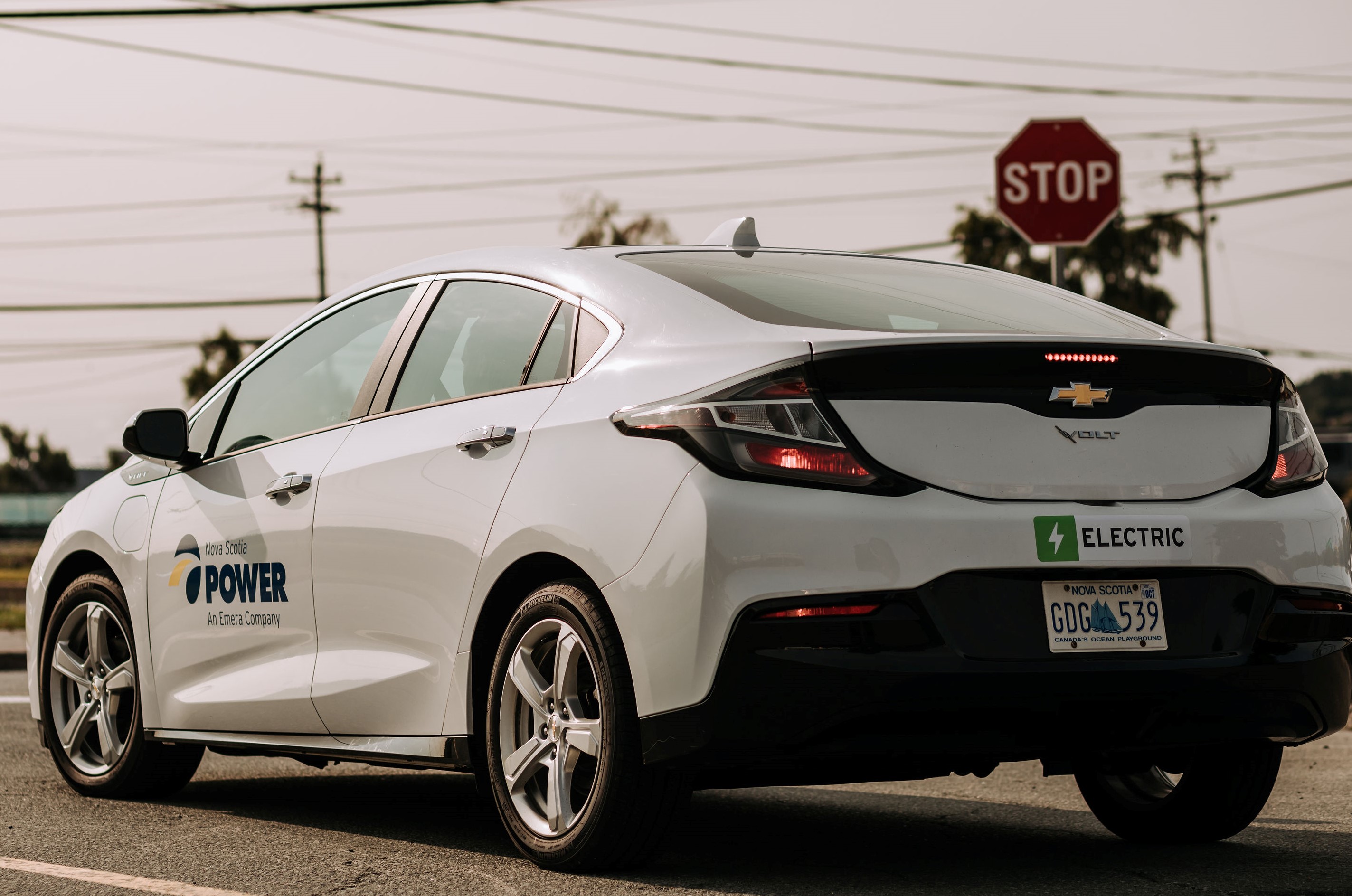Learning from Smart Grid Nova Scotia
In today’s modern, connected world, we all rely on electricity more than ever before. We need our electricity to be reliable to power our lives. And as our climate continues to change, utilities also have a responsibility to respond and move off fossil fuels.
The grid of the future will be powered by renewable energy—and it must also be reliable and resilient. We can’t get there without doing things differently.
What is Smart Grid Nova Scotia?
In 2019, with support from Innovation, Science, and Economic Development Canada, Natural Resources Canada, and the Province of Nova Scotia, we launched an innovative pilot program called Smart Grid Nova Scotia. The goal of the project was to learn about the technology that could best support the renewable energy transition and changing customer needs while evolving our grid to be smarter and more reliable.
Technologies included installing batteries in customers’ homes across Nova Scotia, Atlantic Canada’s first community solar garden, electric vehicle (EV) smart charging, which allows us to influence the time of day when an EV is charging at a customer’s home, and bi-directional charging, which enables EV drivers to take the energy stored in their vehicle battery and push it back to a home, building, or the grid.
On the commercial and industrial side, we worked with businesses to install custom battery and solar solutions to reduce emissions. Additionally, a building management system was used to help manage periods of peak demand for electricity. This enabled us to send commands to buildings to temporarily reduce energy use and test how they could participate as energy resources.
With the project wrapping up, we chatted with Ed Cullinan, Senior Manager of E-mobility and Residential Electrification, and Rob Boone, Manager of Grid Modernization, about what we learned—and how those insights will help us be prepared for what’s next.
Why was Smart Grid Nova Scotia such a critical program?
Meeting the demands of a changing world
“Our world is changing around us—and we’re changing too”, says Rob. “It’s exciting to learn about how our customers’ needs are evolving. Nova Scotians have more options than ever before when it comes to how they power their lives—from solar panels to electric vehicles, to energy storage technology like batteries.”
These distributed energy resources (DERs)—which enable customers to generate their own electricity and connect to the grid in new ways—along with the transition to renewable energy and growing electrification, are changing the demands on the grid. The pilot aimed to not only support the grid through these changes, but to also meet customers’ energy needs.
“Smart Grid Nova Scotia is about finding ways to make the grid more flexible so we can work within these changes—and even create new opportunities,” explains Rob. “It’s about building a modernized grid that everyone can benefit from and participate in.”
Collaborating with customers
The project was focused on understanding the best ways to incorporate new technologies, like DERs, into the energy system—and the best way for customers to play a role. By working with us, customers had the opportunity to access the technology we were testing, like home batteries, at a lower price. Some of the programs, like EV smart charging, also offered opportunities for customers to save money by taking part, while lowering the cost of ownership on new, exciting technology that helps reduce emissions.
“Our customers want more choice in how they power their lives,” says Ed. “They want new energy products and services that can help them save money, reduce their carbon footprint, and help them contribute to fighting climate change. And on the utility side, we need to solve challenges like integrating intermittent renewable energy—like wind and solar power—to the grid. All of this requires moving from the one-way, centralized grid of the past, and embracing a modern, distributed, and connected energy grid where power and information flow in all directions.”
What did you learn from this project that would most excite Nova Scotians?
The project looked at how we could create value in three key categories: affordability, reliability, and the environment. Ed and Rob explain that we found value in all three.
“In the residential battery program, we were able to store wind energy in batteries in customers’ homes for use later,” says Ed. “These batteries also provided back-up power to customers during outages. Often the customer would only notice a short flickering of their lights as the battery was engaged—or they wouldn’t notice the shift at all.”
The project also taught us that we can use power stored in a battery during periods of peak demand for energy, reducing the need to generate additional, and often more expensive, electricity. Using the batteries in this way was completely automated, requiring no effort from the customer. A similar process was applied for customers participating in our EV program.
“The EV smart charging program enabled us to understand how we can prepare for a future where more EV drivers will be plugging into the grid at the same time,” says Rob. “Smart charging allowed us to work with customers to shift charging away from periods of peak demand for electricity, like at the end of the workday, to lower demand times like overnight—all while ensuring customers always had a charged battery when they needed it. This supports our ability to manage the grid, meet demand, and deliver consistent, reliable power. Not to mention, by collaborating with us on the program, over 200 participating customers saved on their bill.”

Tom MacPherson, a customer in Pictou County that participated in the Residential Battery Program (image from The Weather Network)
The size and ambition of Smart Grid Nova Scotia is something both Ed and Rob are proud of. It was a pilot of many milestones—from the largest residential battery program in Canada, to the first vehicle-to-building demonstration in Atlantic Canada. It was even the first project to be approved under the Nova Scotia Utility and Review Board’s innovation criteria, which enabled us to study new technologies and methods for the purpose of learning and gathering data.
But perhaps the most important outcome of the project is the positive impact for our customers. We’re learning how to use these technologies effectively and understanding how we can better collaborate with customers to help them save money on their energy bills.
“The pilot has helped us understand the costs and opportunities around establishing programs, and how we can deliver the most value for customers”, says Ed. “We know our customers want lower costs. Smart Grid Nova Scotia has shown us that we can deliver savings through these kinds of targeted programs. We’re planning for a future that will offer customers a lot more choice and ways to save.”
A bright energy future
Ed and Rob explain that the learnings from Smart Grid Nova Scotia have set us up to make effective choices for customers moving forward.
“An electricity grid in which customers can choose to participate is good for everyone”, says Ed. “Technology and programs like what we tested in the pilot help us operate the grid more efficiently—and that can help lower future electricity costs for all Nova Scotians.”
“It’s important that customers who want to play a role in shaping our energy future can do so—and Smart Grid is a great example of how we can collaborate”, adds Rob. “Everything we learned from this pilot will inform what comes next.”
Smart Grid Nova Scotia was part of the larger Smart Grid Atlantic initiative in partnership with New Brunswick Power and Siemens and was completed with funding from Innovation, Science, and Economic Development Canada, Natural Resources Canada, and the Province of Nova Scotia. More information is available here.
Share This Post:






